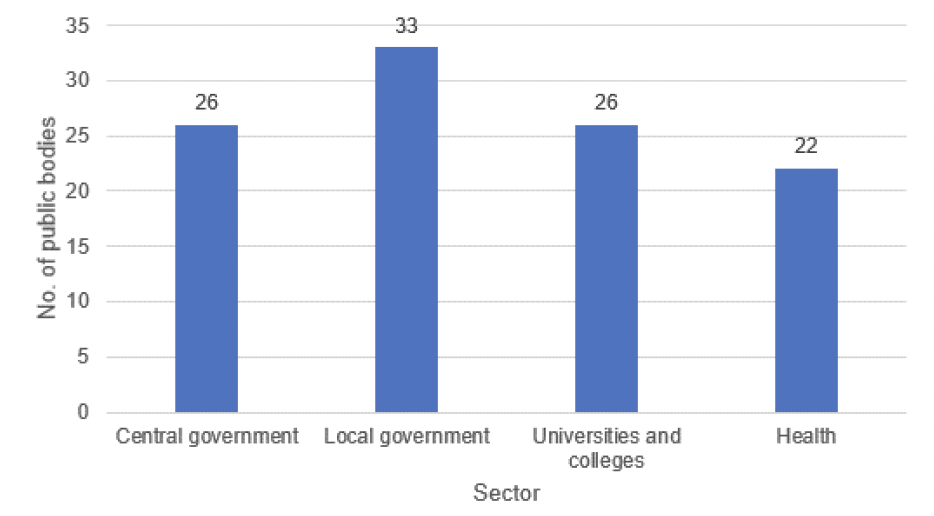Procurement activity: annual report 2021 to 2022
An overview of public procurement activity in Scotland for 2021 to 2022, based on information contained in individual annual procurement reports prepared by public bodies and other relevant information.
1. Introduction
1.1 Background
Published in fulfilment of the requirements of Section 21 of the Procurement Reform (Scotland) Act 2014 (‘the 2014 Act’), this report provides a summary of Scottish public body procurement activity during the 2021 to 2022 reporting year.
The 2021 to 2022 reporting year was a period in which Scotland began to gradually emerge from the COVID-19 pandemic and the resulting lockdown, while also confronting the economic and social challenges it posed to the economy and to society in both the medium- and longer-term. Additionally, the reporting year also encompassed the beginning of the cost of living crisis – a crisis which was soon intensified by the Russian invasion of Ukraine in February 2022.
While there is a clear legislative underpinning to this report, it also presents an opportunity to gain an understanding of the scale of public procurement activity, which took place over the course of the year despite the myriad of challenges described above, and the impact of that activity on businesses, organisations and communities across Scotland.
As part of the 2014 Act, any public body which expects to have significant procurement expenditure in a given financial year must prepare a procurement strategy, setting out how it intends to carry out its regulated procurements.[1] After the end of that financial year, the public body must then publish an annual report on their regulated procurement activities, demonstrating how they have conducted their procurements in a manner which is compliant with their procurement strategy. They must publish this report as soon as is practicable. Additionally, a group of two or more public bodies may publish a joint procurement strategy and annual report.
While the legislation does not require lower-spending public bodies to produce a procurement strategy and an annual procurement report, some nevertheless do so as a matter of good practice.
However, due to some public bodies’ procurement spend not meeting the threshold for reporting, or submission of annual reports coming after the deadline for analysis within this report, or submission of a joint report with another public body, there are fewer reports analysed herein than public bodies across Scotland.
In line with the 2014 Act, this report, which is laid before the Scottish Parliament, must be prepared based on information contained in the annual procurement reports. It must include information on:
- the regulated procurements that were completed during the reporting year;
- any community benefit requirements that were fulfilled during the year;
- any steps taken to facilitate the involvement of supported businesses in regulated procurement, and
- any other information that the Scottish Ministers may consider to be appropriate.
As in previous years, this report is structured around the four key outcomes, which underpin the delivery of public procurement in Scotland.[2] As such, it demonstrates the steps that public bodies have taken over the course of the year to deliver their procurement activity in a manner that is good for businesses and their employees, good for society, good for places and communities, and open and connected.
1.2 Methodology
While this report is informed by quantitative and qualitative data obtained from a range of sources, two particular data sources are imperative to its production.
Firstly, each year, an analysis of all of the public body annual procurement reports published for the most recent reporting cycle is carried out, and this report contains some of the most pertinent aspects of that analysis.
For the 2021 to 2022 reporting cycle, a total of 132 annual procurement reports were included in the analysis – an increase on the 120 reports analysed for the last report which covered the year 2020 to 2021. A full list of the public bodies whose reports were included in the analysis this year is provided at Appendix 1.
This year, the largest proportion of reports analysed were from central government organisations and other significant bodies. As shown in Figure 1, this sector accounted for 35 (or 26.5%) of all 132 reports analysed.

Secondly, public procurement spend data, which is made available each year through the Scottish Procurement Information Hub (‘the Hub’), is the other key source used in the preparation of this report. Each year, the Scottish Government requests raw accounts payable data from bodies across the Scottish public sector. This data is enhanced by a third-party supplier using publicly available data in order to classify suppliers by size, location, area of business, charity status and other characteristics, where this information is known. Thereafter, the data is uploaded to the Hub and made available to participating public bodies for analysis.
Note that the information on the Hub relates to procurement spend with suppliers that were classed as commercial organisations or as non-trade social care providers, and with whom individual public bodies spent £1,000 or more in aggregate in any given year.
During the year 2021 to 2022, 107 public bodies provided procurement spend data for publication on the Hub. As shown in Figure 2, the largest share of public bodies providing procurement spend data were from the local government sector (33, or 30.8%).

Contact
Email: ScottishProcurement@gov.scot
There is a problem
Thanks for your feedback